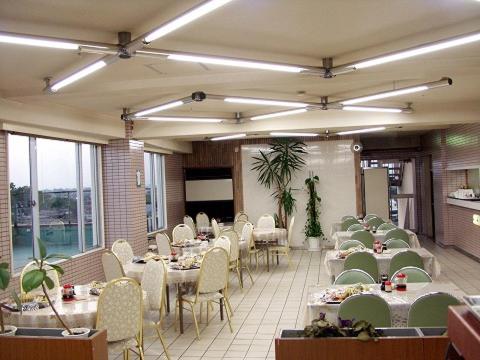Kuroishiji Temple
menuMenu
Kuroishiji Temple, a historic temple said to have been founded by Gyōki, the first temple in the Tohoku region. Be sure to see the National Treasure wooden seated Yakushi Nyorai statue.






Highlights
- National Treasure wooden seated Yakushi Nyorai statue
- The first temple in the Tohoku region
- Historic temple said to have been founded by Gyōki
- Kuroishiji Suminsai Festival, an Intangible Folk Cultural Property
- A temple where you can feel history and tradition
Basic Information
- Address
- 17 Yamauchi, Kuroishi-machi, Mizusawa, Ōshū City, Iwate Prefecture Search for tourist attractions in Iwate
- Access
- Bus: Take the “Shōhōji Line” from Iwate Kenkō Bus, “Mizusawa Station” on the Tōhoku Main Line, and get off at the “Kuroishiji-mae” bus stop. Car: 20 minutes from Mizusawa Station on the Tōhoku Main Line, 15 minutes from Mizusawa-Esashi Station on the Tōhoku Shinkansen, 25 minutes from Mizusawa Interchange on the Tōhoku Expressway, and 20 minutes from Hiraizumi-Maezawa Interchange on the Tōhoku Expressway. Show route
- Op.Hours
- 9:00 AM to 4:00 PM
- Cld.Days
- Open every day
- Fee
- ¥500 for adults, ¥300 for children
- INFO
- Parking is available on the temple grounds. During the Suminsai Festival, the parking lot can become very crowded, so we recommend using public transportation.
Overview
Recommended nearby attractions
Shoboji Temple

Be awestruck by the main hall, boasting one of Japan's largest thatched roofs! This temple is a representative Tohoku temple where you can experience history and culture.
Chusonji Temple

The dazzling Golden Hall is breathtaking! A treasure trove of history and art where you can experience the Buddhist culture of the Heian period and the splendor of the Fujiwara clan.
Mōtsū-ji Temple

Mōtsū-ji Temple, with its magnificent Heian-period structures and stunning pond-style strolling garden, is a quintessential Hiraizumi sightseeing spot and a UNESCO World Heritage site.
Muryoko-in Temple Site

The remains of a temple once surpassing Byodo-in in scale, a legacy of the Oshu Fujiwara clan.
Komagata Shrine, Ichinomiya of Mutsu Province

A historically significant shrine nestled in nature, known as one of Tohoku's premier power spots.
Coastal Mountain Fumon-ji Temple

Packed with highlights including an Iwate Prefecture-designated cultural property—the three-story pagoda—and numerous Buddhist statues donated after the Great East Japan Earthquake!
Komagata-ne Shrine

A shrine located within the Koteshira Mura Shoen ruins, part of the 'Ichinoseki Honji Temple Rural Landscape' aiming for World Heritage registration. Spend a peaceful time surrounded by tranquility and nature.
Kanjizaiōin Temple Site

Experience the precious history of Hiraizumi, a World Heritage site!
Mount Kinkazan

A sacred mountain that served as the basis for Hiraizumi's urban planning, situated almost midway between Chūson-ji Temple and Mōtsū-ji Temple.
Denshoen (Tradition Garden)

A place to experience the rich nature and culture of Tonono—a truly invaluable experience.
Nearby Hotels
Mizusawa Grand Hotel

Hotel Route Inn Oshu

Plaza Inn Mizusawa

Suimeiso

